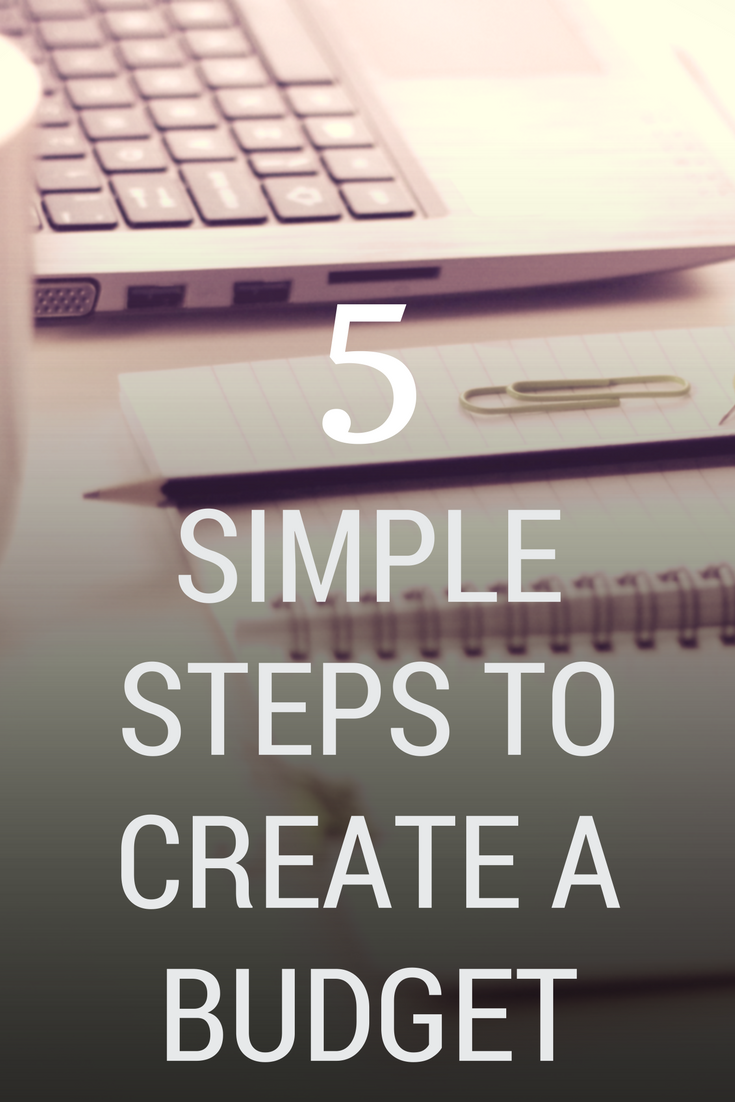This post may contain affiliate links. Read our disclosure here.

No matter what time of year, it’s ALWAYS a great time to sit down and start budgeting. I know budgets are stressful for most folks, just the word causes anxiety. Getting started with your first budget though is actually really simple!
Let’s take a quick approach to getting started that will hopefully be low stress too.
5 Simple Steps to Create A Budget
- Create A Goal
This is a funny place to start, but goals are huge. They keep us going with times are tough and become our light at the end of the tunnel. As you start your budget I urge you to come up with a goal that will keep you going. It can be very practical, like pay off all our debt, pay off the house etc. It can also be fun… If we can save an extra $2,000 we will go to Disney World. Yes you can put all that money in savings, but if we never let ourselves eat dessert our diet will fail. So reward yourself with a great goal that is affordable for your family. - Analyze Past Spending
Look at your expenses from last month and assign them to one of a few categories. Also ponder any payments that you make yearly so that they aren’t missed (car taxes, insurance payments). Here’s a free download from Dave Ramsey that might help.To help you analyze spending every month try out a free program like Mint.com. You hook it straight up to your bank account and it will categorize everything you spend. It also has a budgeting tool built into it. Can’t get more simple than that (and remember it’s free).
Tip: If you run upon something that doesn’t fit into one of these categories, that should be your first red flag that it’s not a necessity.
- Figure Up Income
You looked at everything you were spending. So step 2 is to figure up exactly how much money you have coming in. What is your monthly salary? If you earn commissions then you need to look at an average from last year. Never get wishful on this step. You don’t want to start off killing the budget, so base any income off previous years if you are uncertain on exact numbers. Hopefully you’ll have a great year, that will just mean extra savings in the end! - Start Cutting Where You Can
If you are like 85% of Americans the numbers from step #1 and step #2 aren’t going to match up. This is where the hard part comes in… you need to take a good hard look at where all your money is going and make some decisions on what to change. The biggest question to ask yourself is “Do I need this or want it?” The basics of life are needs, are you clothed, fed, warm and dry? Beyond a place to sleep, food to eat, transportation, and basic clothes pretty much everything else is a want. - Everything Not Used Is Saved
Remember the goal in step #1? To meet that you need to make sure that extra money in your budget doesn’t end up in the dreaded “cash” category. That just means it was money you spent without thinking. Any extra in your budget needs to be put into savings. Most financial planners will urge you to work towards having 6 months income in savings.
Some Possible Areas to Cut/Reduce
Cable – try a smaller shift to Sling TV if you can’t do without some cable, starting at $20 a month
Phone – go to a prepaid plan, or join up with family members to reduce your bills significantly.
Eating Out – Try to reduce this section as much as possible for even a month. If fast food is a problem, download some of the mobile apps that give you free food and coupons.
Clothing – shop consignment or used for kids as they outgrow things, and see if you can make do in your own wardrobe for a bit. To add some change, grab little things like a new scarf to make an outfit feel new.
Electricity – Try Budget Billing on your electricity and water bills. This averages your bills from past years and you pay the same amount every month. It doesn’t save you money, but does save you the heart attack of a summer electricity bill.



